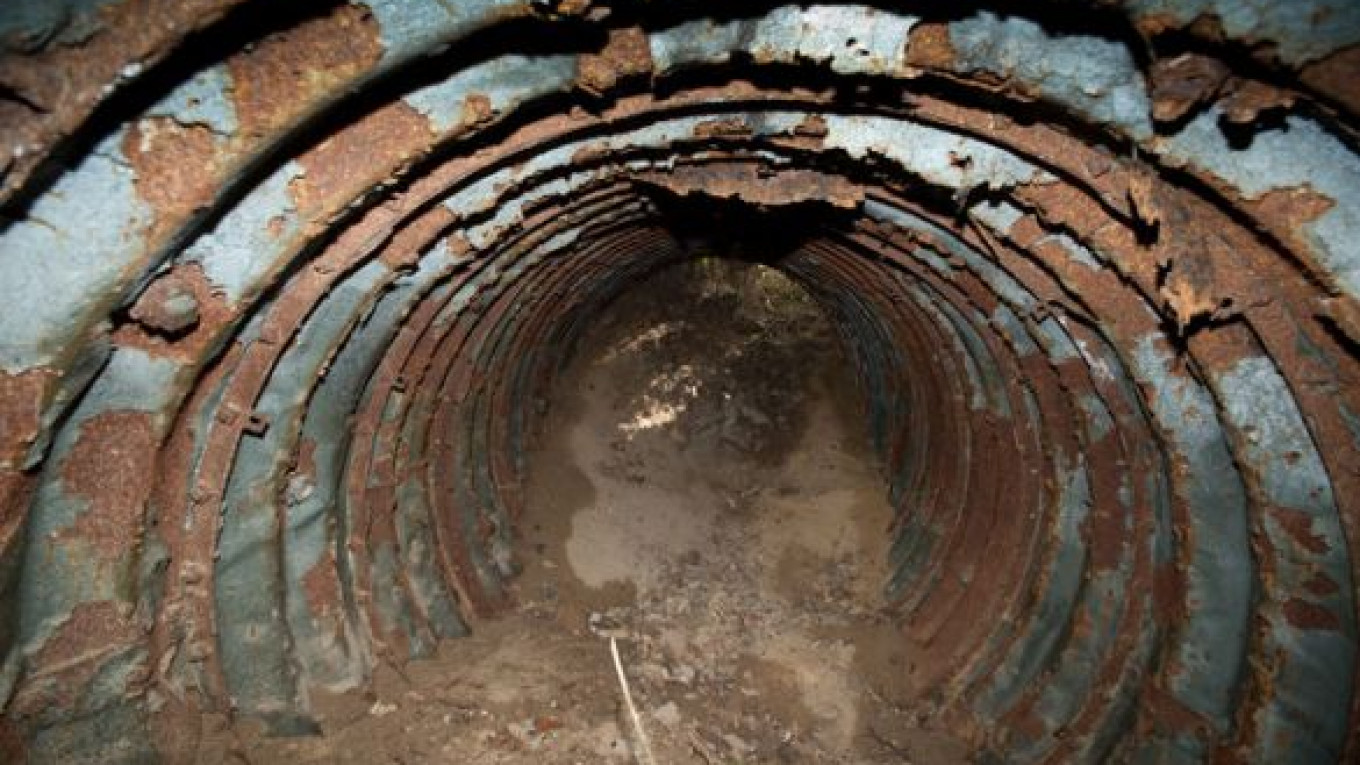A section of an ingenious tunnel built by U.S. and British spies to intercept Russian phone conversations in Cold War Berlin has been found after 56 years in a forest 150 kilometers from the German capital.
The 450-meter-long tunnel, built in 1955, led from Rudow in West Berlin to Alt-Glienicke in Soviet-occupied East Berlin. By tapping into the enemy's underground cables, Allied intelligence agents recorded 440,000 phone calls, gaining a clearer picture of Red Army maneuvers in eastern Germany at a time when nuclear war seemed an imminent threat.
The western part of the tunnel was excavated in 1997, and part of it is preserved at the Allied Museum in the former American sector of Berlin. The Soviet authorities dug up the eastern part in 1956, and until now its fate was unknown.
"It seemed to have vanished without a trace," said Bernd von Kostka, a historian at the Allied Museum. "I looked through the East German Stasi files, and there was nothing to be found about its whereabouts. We assumed it had been melted down because it was made of valuable metal."
The find is one missing piece of a puzzle that will take decades to solve completely, because access to intelligence files about the construction and discovery of the tunnel — a tale worthy of a John le Carre novel — is still restricted.
The man who discovered the buried segment is Werner Sobolewski, 62, formerly employed in a civilian capacity by the East German army. He was chopping wood in his local forest in Pasewalk, near the Polish border north of Berlin, when he stumbled across the wide metal pipe.
He remembered it being used for military exercises at the local barracks, where he had worked before the fall of the Berlin Wall. He recalled too that it was then rumored to have been a part of the Allied spy tunnel, infamous throughout eastern Germany after the Soviets exposed it in a major propaganda campaign in 1956.
He contacted the Allied Museum, and Kostka traveled to Pasewalk to identify it last week.
"We would like to have it in the museum so that we have a part of the eastern tunnel," Kostka said in an interview at the Allied Museum. "The sections we have are from the western side. It shouldn't stay buried underground."
The western tunnel segment is a prize exhibit at the Allied Museum, which is also home to the original Checkpoint Charlie guard hut and a Royal Air Force Hastings plane used in the Berlin airlift of 1948 and 1949.
Displays describe the complexity of building the tunnel and tapping the wires. The British had already constructed similar underground listening posts in Vienna and brought the idea, manpower and know-how to the project, Kostka said.
Codenamed "Stopwatch" by the British and "Gold" by the Americans, it was funded by the U.S. at a cost of $6.7 million (then a vast sum) and operated jointly by the CIA and the British SIS.
Yet the KGB learned about the tunnel when it was still in the planning stages, thanks to intelligence from George Blake, the notorious British double agent who was later imprisoned, then escaped to the Soviet Union.
Strangely, the KGB concealed its existence from the Soviet military because they wanted to protect their valuable mole.
The tunnel operated for 11 months and 11 days, intercepting some of the Red Army's most secret communications, including those between Moscow and the military headquarters in East Berlin.
Historians do not know why the Soviet authorities chose to expose it when they did, on April 22, 1956. The reason is still buried in the Kremlin's files.
"It was clear that the tunnel had a finite lifespan and would be discovered one day," Kostka said. "But the Allies expected the Soviet authorities to sweep it under the carpet."
Instead, they held their first international news conference in 11 years of occupation and bused in as many as 50,000 East German citizens so that they could see firsthand the treachery of the west.
Yet it was also a propaganda coup for the U.S. intelligence services, as the tunnel's ingenuity impressed American observers.
"It's a great Cold War story," Kostka said. "Each side could say they won."
A Message from The Moscow Times:
Dear readers,
We are facing unprecedented challenges. Russia's Prosecutor General's Office has designated The Moscow Times as an "undesirable" organization, criminalizing our work and putting our staff at risk of prosecution. This follows our earlier unjust labeling as a "foreign agent."
These actions are direct attempts to silence independent journalism in Russia. The authorities claim our work "discredits the decisions of the Russian leadership." We see things differently: we strive to provide accurate, unbiased reporting on Russia.
We, the journalists of The Moscow Times, refuse to be silenced. But to continue our work, we need your help.
Your support, no matter how small, makes a world of difference. If you can, please support us monthly starting from just $2. It's quick to set up, and every contribution makes a significant impact.
By supporting The Moscow Times, you're defending open, independent journalism in the face of repression. Thank you for standing with us.
Remind me later.


